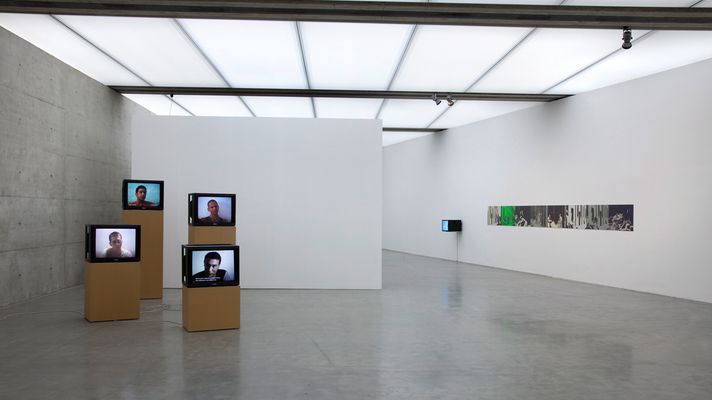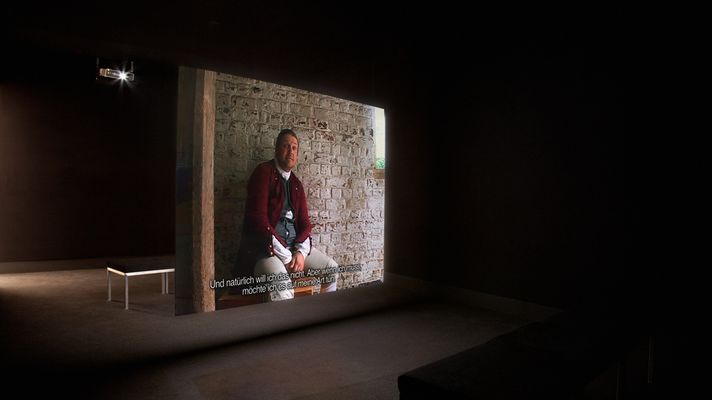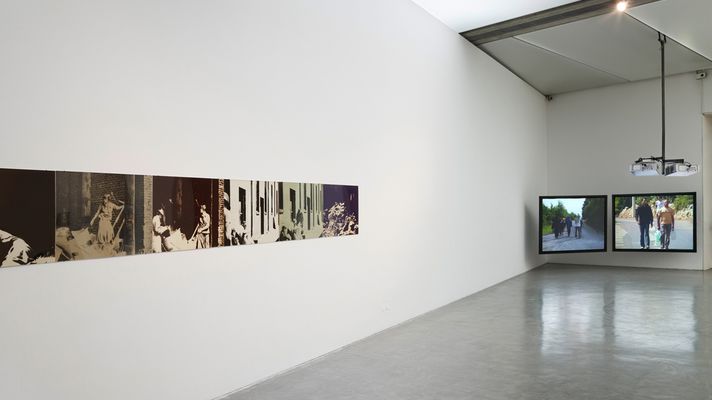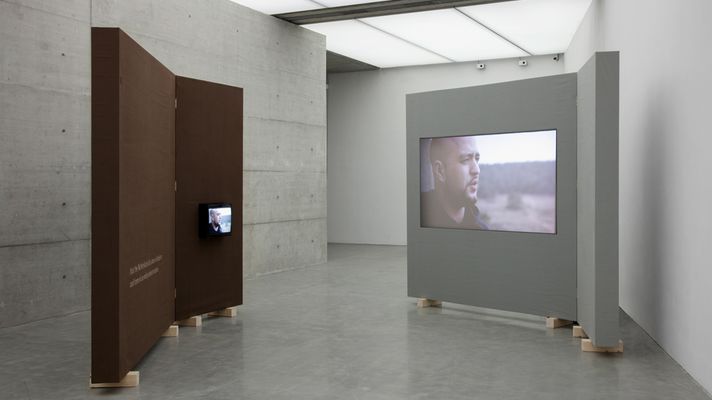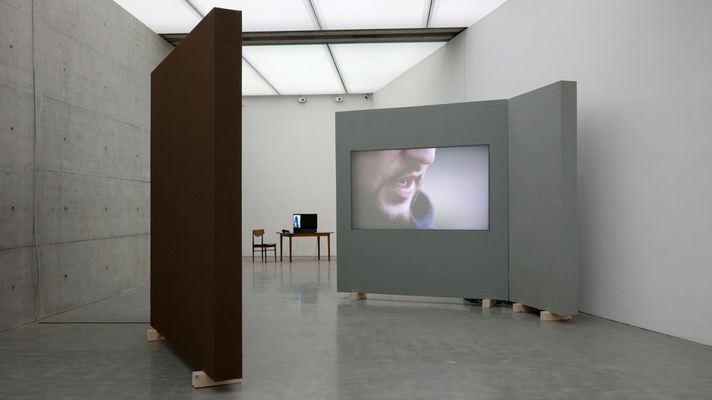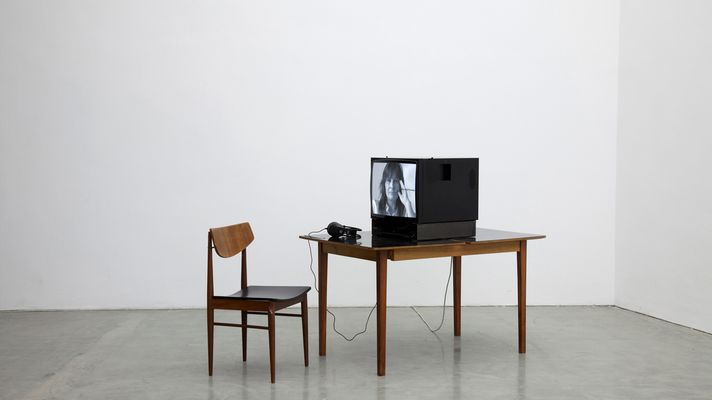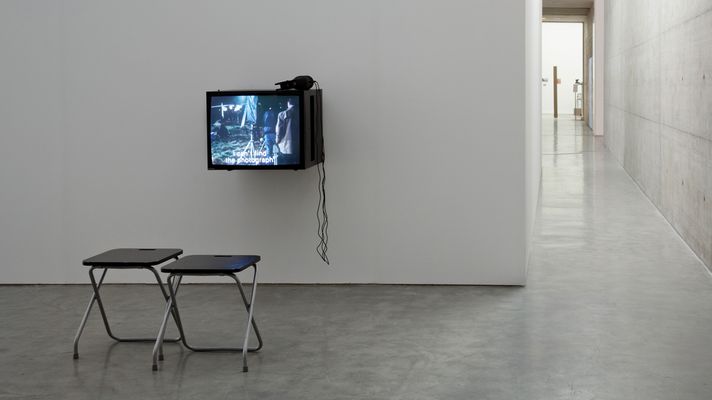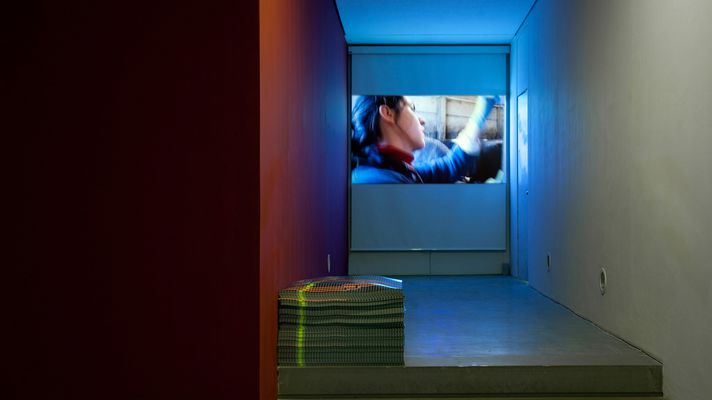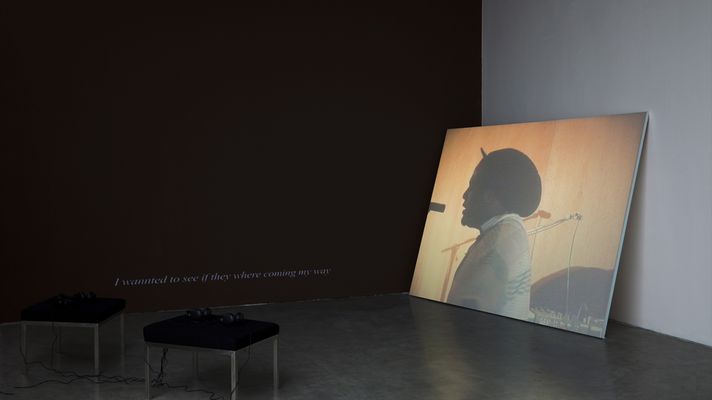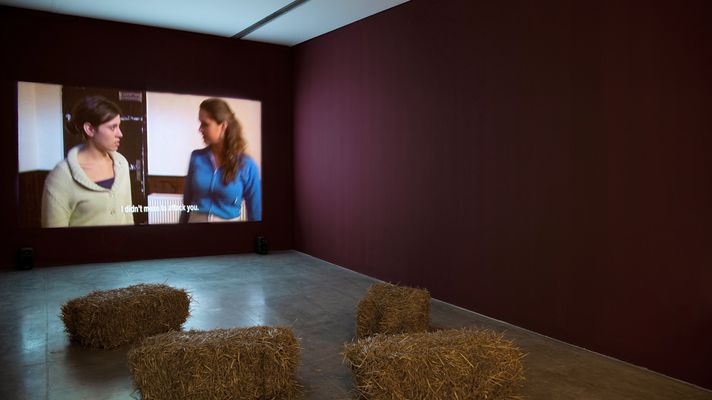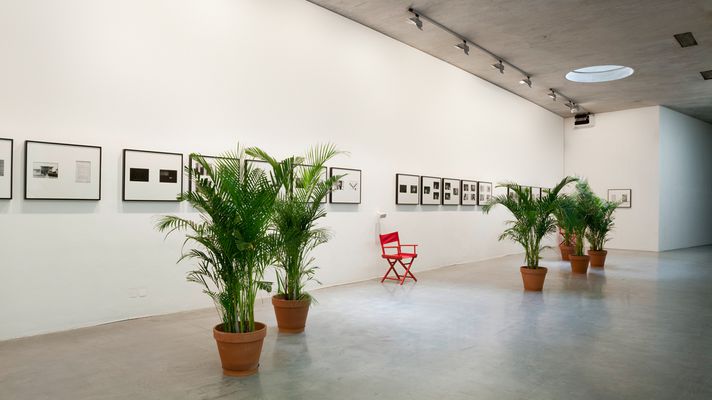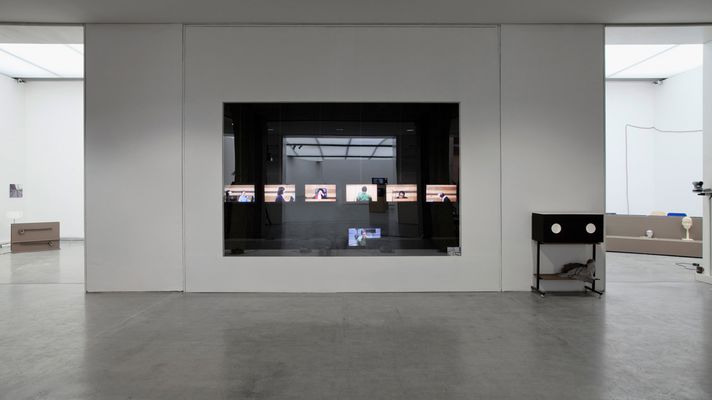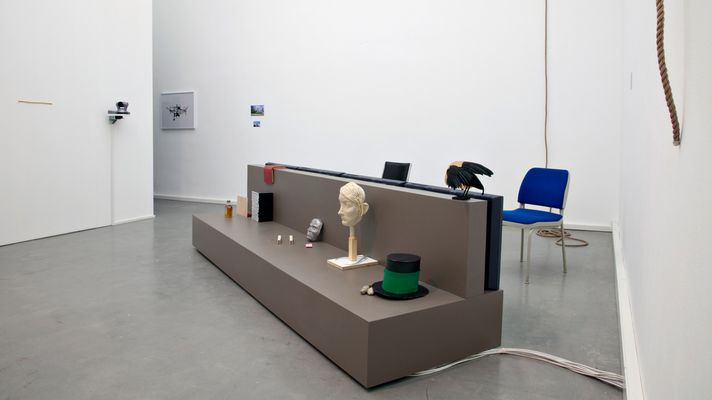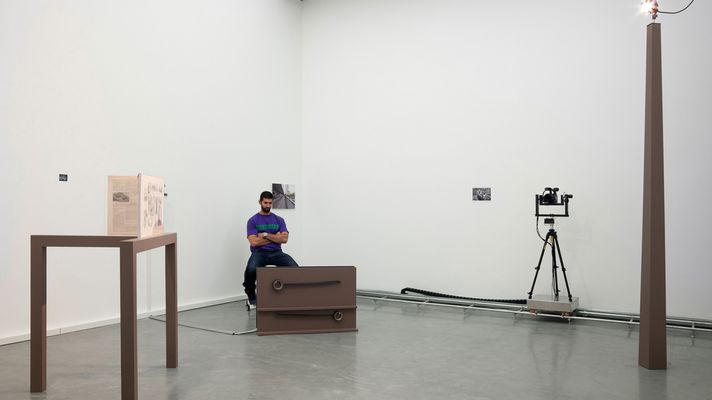Behind the Fourth Wall
Fictitious Lives – Lived Fictions
Opening: Tuesday, June 1, 2010, 7 p.m.
Exhibition showing: June 2 – August 15, 2010
Place of exhibition: Generali Foundation, Wiedner Hauptstraße, 1040 Vienna
With works by Harun Farocki, Omer Fast, Michael Fliri, Andrea Geyer, Marcello Maloberti, Aernout Mik, Frédéric Moser & Philippe Schwinger, Wendelien van Oldenborgh, Judy Radul, Allan Sekula, Ian Wallace
Though we know about the policy of fictions, delusions, and simulations of the real that inform our thoughts and desires, their magnetic attraction seems to be unbroken. How real is reality when the difference between being and appearance has long since been abolished with the transformation of reality into an impenetrable surface? The awareness of the "made" character of the world, the construction of always new models of reality and life, which organizes, steers, and manipulates how we live together, calls for looking behind the scenes, creating stages oneself if need be, for thwarting the fictitious by confronting it with the real. Can reverting to a historical model such as Diderot’s "Fourth Wall" or Bertolt Brecht’s alienation effect help bring forth a stage which permits "another" view or the regaining of a distance that allows a critical description of the world we live in?
Marking the interface between mise-en-scène and real world in eighteenth-century theater, Denis Diderot’s Fourth Wall also insisted on an appropriate detachment vis-à-vis the illusions and was to "shake"—and change—the viewer’s perception in the end. Against the background of a different understanding of reality and the theater, Brecht pursued a similar objective with his alienation effect as Diderot did with his idea of the Fourth Wall: both regarded the stage as a distancing mirror revealing the true/false nature of the world to the eye.
With a wide range of approaches, the featured artists address the question of how reality can be conveyed in images, statements, and signs. As, for example, when Judy Radul transfers the International Criminal Court from The Hague to the exhibition space, presenting a four-hour reenactment of several cases (including those against Slobodan Milošević and Liberian president Charles Taylor) in which attention is focused on the possibility of portraying and staging "truth." Radul orients her mise-en-scène towards the organization and deployment of technical apparatus: the camera eye is the director in this theater of controlled views/viewpoints and, as in Diderot’s plays, it creates a performance of observer situations embedded inside one another, allowing reality to be analyzed from different angles.
The picture Aernout Mik gives us in Convergencies is no longer what Roland Barthes calls "a pure cut-out segment with clearly defined edges," for its edges fray out into an indeterminacy of space and time. Like Harun Farocki’s Immersion, in which the impact of virtual worlds is tested, Mik’s film offers a critical view of the attractive force of media images that renders the world of fiction barely discernible from that of reality. Projected nto two panorama-like panels mounted in a corner, recalling the genre of history painting, we see an endless succession of found footage from international news broad-casters. The material, edited without narrative accentuation or explanatory commentary, leaves the viewer in a state of suspension, without orientation.
In the works by Andrea Geyer, Wendelien van Oldenborgh, and Omer Fast, language is used in various ways as a tool for rendering visible the real in the fictional. In Andrea Geyer’s Reference Over Time, a work made as an immediate reaction to "
USA PATRIOT Act II" (a piece of draft legislation from the Bush era that would have given the state powers including the deportation of legal immigrants), stuttering, breakdowns, and Godardian stammering, combined with evident physical discomfort, symbolize the precarious situation of statelessness as an actress reads from Bertolt Brecht’s Conversations in Exile.
In No False Echoes, by contrast, Wendelien Van Oldenborgh creates a many-layered landscape of language and image where a historical text by Indonesian freedom fighter Soewardi Soerjaningrat and debate surrounding the broadcasting policy of Dutch broadcaster Philips Omroep Holland Indië are dissolved in a polyphony of voices located somewhere between fiction and documentation. In Godville, Omer Fast interlinks two space-time levels (the 18th and the 21st century). Editing together interviews recorded at the Living History Museum in Williamsburg, Virginia, into a seamless narrative, the overlap between fact and fiction is used to lay bare the fault lines between (historical) events, memory, experience, and translation into media.
In Farewell Letter to Swiss Workers, Frédéric Moser and Philippe Schwinger present a historical crossover translated into a stage-like video installation: at various locations and in different social groups, the possibility of adapting Marxist discourse to real life is put to the test via theatrical play.
In Allan Sekula’s Aerospace Folktales and Ian Wallace’s Poverty, looking behind the Fourth Wall becomes an inquiry into the nature of reality in the photographic image. While Sekula locates his own family situation within the social and political milieu of the early 1970s, attributing a specific place to the viewer within the setting of his theatrically staged reportage, Ian Wallace transfers the dramaturgy of film into photography, where the supposedly factual (pictures of poverty) has always been based on theatricality, i.e., on the representation of reality. Nothing in Poverty is unmediated or authentic, but there is no doubt about the reality it conveys: behind the photographs with their distorted colors, the perception of reality is revealed as a "cliché."
How can "truth" be experienced in the drama of gestures that only purport to be authentic? Or, conversely, how does one gain access to the fictions that deceptively present themselves to us as reality?
The works featured here aim to present many-layered reality as something under construction. To this end, they examine (micro)political communities and transform social milieus into theatrical settings, dissecting their structures with the rhetoric of theater and cinema. Documentary, (auto)biographical, and fictional material form the basis for this critical inquiry into the current state of the world we live in.
Curator: Ilse Lafer
